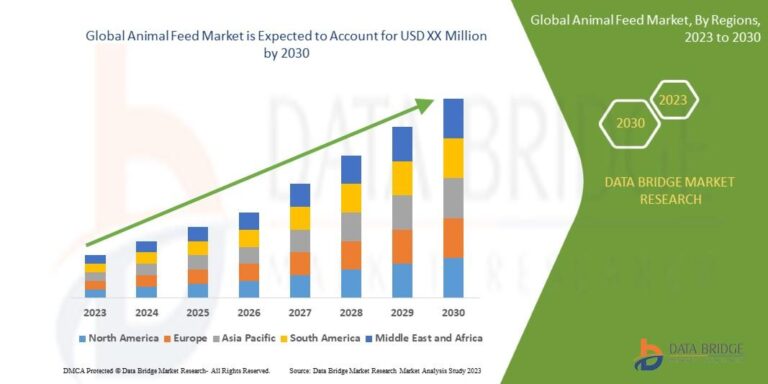The United Kingdom’s animal feed market is poised for steady expansion, with projections indicating a rise to 16 million tons in volume and a valuation of $34.9 billion, according to a recent report by IndexBox. This growth reflects increasing demand driven by a robust livestock sector and evolving consumer preferences. Industry analysts highlight the market’s resilience amid economic uncertainties, underscoring its critical role in supporting the country’s agricultural framework. The detailed insights from IndexBox provide a comprehensive outlook on production trends, import-export dynamics, and key factors shaping the future of the UK animal feed industry.
United Kingdom’s Animal Feed Market Projection Reveals Robust Demand Across Livestock Sectors
The United Kingdom’s animal feed industry is on track for notable expansion, with projections indicating a rise to 16 million tons in volume and reaching approximately $34.9 billion in value over the coming years. This growth is primarily driven by increased demand across multiple livestock sectors, including cattle, poultry, and swine. Among these, the poultry segment exhibits the most rapid consumption surge, reflecting shifting consumer preferences and intensified production efforts. Additionally, advancements in feed formulations focusing on nutritional efficiency and sustainability are contributing significantly to market momentum.
Market experts highlight several key factors influencing these trends:
- Rising domestic meat consumption, fueling steady feed demand
- Government initiatives supporting livestock productivity and health
- Innovation in specialty feeds designed for enhanced animal performance
- Expansion of organic and free-range farming practices leading to niche feed product growth
| Livestock Sector | Projected Feed Volume (Million Tons) | Market Value ($ Billion) |
|---|---|---|
| Cattle | 6.2 | 13.5 |
| Poultry | 5.8 | 12.8 |
| Swine | 3.0 | 6.0 |
| Others | 1.0 | 2.6 |
Emerging Trends and Key Drivers Fueling Growth in the UK Animal Feed Industry
The UK’s animal feed sector is witnessing a dynamic transformation driven by innovations in sustainable ingredients and an increasing emphasis on animal health and welfare. Manufacturers are actively incorporating alternative protein sources like insect meal, algae, and plant-based proteins to reduce reliance on traditional soy and fishmeal, responding to mounting environmental concerns. Additionally, the rise of precision nutrition, powered by advanced analytics and biotechnology, allows for tailored feed formulations that optimize livestock growth and productivity while minimizing feed waste. Government initiatives promoting sustainability, alongside consumer demand for ethically sourced animal products, are also propelling investment in eco-friendly feed additives and organic feed variants.
Moreover, several critical factors are shaping the market’s expansion:
- Rising domestic meat consumption encouraging greater feed production
- Integration of smart farming technologies for improved feed efficiency
- Growing export opportunities leveraging the UK’s reputation for quality livestock products
- Enhanced regulatory frameworks ensuring feed safety and quality standards
| Key Driver | Impact on Market |
|---|---|
| Alternative Proteins | Reduced carbon footprint, cost-effective formulations |
| Precision Nutrition | Higher feed conversion ratios, healthier livestock |
| Regulatory Support | Improved product standards, market trust |
| Consumer Trends | Demand for organic and welfare-friendly feeds |
Strategic Recommendations for Stakeholders to Capitalize on Market Expansion Opportunities
To harness the burgeoning potential in the UK’s animal feed sector, stakeholders must prioritize diversification of product portfolios. This entails expanding beyond conventional feed ingredients to include nutritionally enhanced and sustainable options, addressing both regulatory shifts and growing consumer demand for eco-friendly solutions. Collaborations across the supply chain-from raw material suppliers to distribution networks-will be indispensable for optimizing cost-efficiency and ensuring market penetration in emerging rural and urban markets alike.
Moreover, investing in cutting-edge technology for precision feeding and quality control can vastly improve product consistency and livestock health outcomes, thereby fostering stronger brand loyalty. Key strategic moves include:
- Leveraging data analytics: to anticipate market trends and consumer preferences swiftly
- Strengthening export partnerships: especially within the EU, capitalizing on reduced trade barriers and demand
- Enhancing sustainability practices: to meet tightening environmental regulations and appeal to conscious buyers
| Recommendation | Expected Impact |
|---|---|
| Product innovation in sustainable feeds | Increased market share & regulatory compliance |
| Integration of digital supply chain tools | Reduced operational costs & improved delivery times |
| Targeted expansion into niche segments | Higher profit margins & brand differentiation |
To Wrap It Up
As the United Kingdom’s animal feed market is projected to reach 16 million tons and a value of $34.9 billion, industry stakeholders are closely watching these developments. Driven by increasing demand for livestock products and advancements in feed formulations, the sector is poised for steady growth in the coming years. Market analysts emphasize the importance of innovation and sustainability practices as key factors shaping the future landscape of the UK’s animal feed industry.




